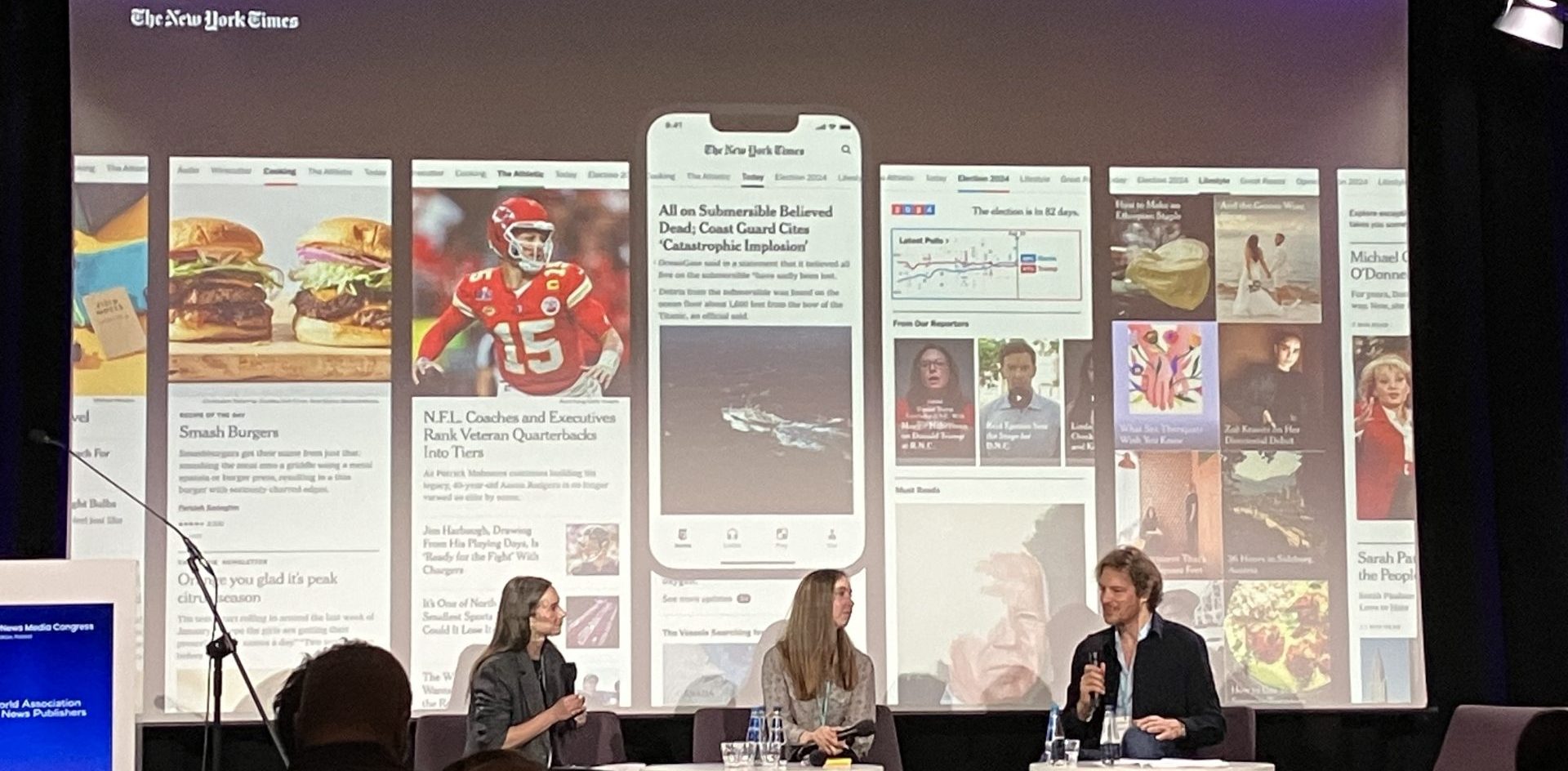
Newsletter
Newsletter
This week, we highlight an INMA report on how publishers can engage Gen Z, which is mobile-first, craves authenticity and is turned off by crisis reporting.
14th September 2022

In the Pugpig weekly media bulletin, Pugpig’s consulting services director Kevin Anderson distills some of the best strategies and tactics that are driving growth in audiences, revenue and innovation at media businesses around the world.
In ten years, Gen Z will be the primary audience for news publishers, according to INMA, which has just released a report on what they must do to engage the next generation. If publishers think that Millennials posed a challenge due to their different habits than previous generations, look out! INMA’s Ideas blog editor, Paula Felps says that Gen Z’s habits “represent an even bigger shift in readership habits” than the generation that preceded them.
Sign up to get the Media Bulletin in your inbox.
Rupert Murdoch once famously declared himself a digital immigrant while his daughters were digital natives because they had never known a world without broadband internet access. Gen Z have never known a world without ubiquitous digital technology, and they go beyond a mobile-first mindset to a mobile-only lifestyle, Felps says.
And the window onto news for this mobile-only generation is via social media platforms on their phones. This insight isn’t all that earth-shattering, and taking your content to where audiences are on social media has been a strategy for years, but the social media mix has been changing with Tiktok and Instagram much more likely to be the platforms of choice rather of Gen Z than Facebook, the report states.
In one of the case studies in the report, The Australian discussed how it used Instagram to engage Gen Z. Using a weekly quiz and what Faisal Kalim at What’s New in Publishing described as a radical new look, the newspaper saw explosive grow on the platformas well as referrals to their content, which has been a challenge Insta. They grew reach by 398%, followers by 22%, comments by an 919% and referrals by 173%. Moreover, they believe that increased dwell time on their posts will build habits that support their subscription model, according to Elyse Popplewell, the social media editor at The Australian.
However, it’s not just about being on the right platform. Publishers also need to be authentic when engaging Gen Z audiences. EY research found that 92% of Gen Z or Zoomers polled said that authenticity was more important than any other personal value. And to achieve that, publishers are going to have to hire from that generation to engage with members of it. Technology has enabled Zoomers to be a generation of creators, and publishers should hire this creative generation to generate content that resonates with them.
And one last thing: Crisis reporting turns off Gen Z. As Kalim points out, over emphasis on politics and crises can lead to news avoidance and mistrust amongst Gen Z.
Former Digiday Editor-in-Chief Brian Morrissey believes that successful publishers have three things in common:
And he singles out Future for running this playbook successfully. The company is worth eight times more than Buzzfeed, and he interviewed Future CEO Zillah Byng-Thorne on the strategy that allowed her to take a company in decline to one looking abroad for its next phase of growth. The US already accounts for accounts for 35% of its audience and 38% of its revenue, and Byng-Thorne believes that Future’s niche consumer brands covering golf and tech could easily be expanded to the US.
Why are we thinking about geography when the internet doesn’t have a geographical divide? And so what we said was let’s stop thinking about boundaries and borders and start just thinking about our enthusiasm, our audience, and let’s write content for wherever they are within the English speaking domain.
Zillah Byng-Thorne, CEO Future
In turning the company around, Byng-Thorne also diversified revenue streams, particularly on the digital side of the business, which was overly reliant on advertising. Considering their portfolio of consumer publications, commerce has been a natural extension of their revenue mix.
And once the business started generating strong results, the company had the cash to splash on acquisitions. Since she became CEO, the company has spent £1 b buying other companies including Dennis Publishing and MarieClaire.com. If you want to listen to his full conversation with Byng-Thorne, including how she turned the company around from losing £35m in 2014 to the growing, acquisitive operation that it is now, listen to the full episode of The Rebooting podcast.
The Economist has long been the envy of the publishing industry with its exclusive audience and strong business model. Along with the Wall Street Journal, The Economist was one of the few publications that entered the digital marketplace with a paywall. INMA interviewed deputy editor Tom Standage about the transformations that made this success possible.
The theme throughout the interview is how The Economist avoided creating silos that would have hampered their transition. They didn’t create a separate digital newsroom. Instead, they opted to keep a single unitary newsroom, putting the publication on the web each week and charging people for the privilege of reading that content.
While avoiding the pitfall of creating separate digital and print editorial teams at the dawn of the digital era, this set them up to become a product led company. Product management requires a culture, an organisational structure and the talent to work across the organisation to align editorial, commercial and technical teams.
Great journalism needs great product and engineering teams, and they need to work with each other.
Tom Standage, Deputy Editor, The Economist
This product led culture has allowed The Economist to experiment with all aspects of its digital strategy including different forms of paywalls as well as new formats including being very early to the podcast game, launching podcasts in 2006 as Apple started to embrace and champion the format.
Introducing product management to media organisations has been a key development that has allowed media companies to bring their operations into alignment to deliver great products to their audiences and develop successful business models. If you need help with product development and product management, get in touch with Pugpig consulting services.
Here are some of the most important headlines about the business of news and publishing as well as strategies and tactics in product management, analytics and audience engagement.

Newsletter

Newsletter

Newsletter

Newsletter

Newsletter